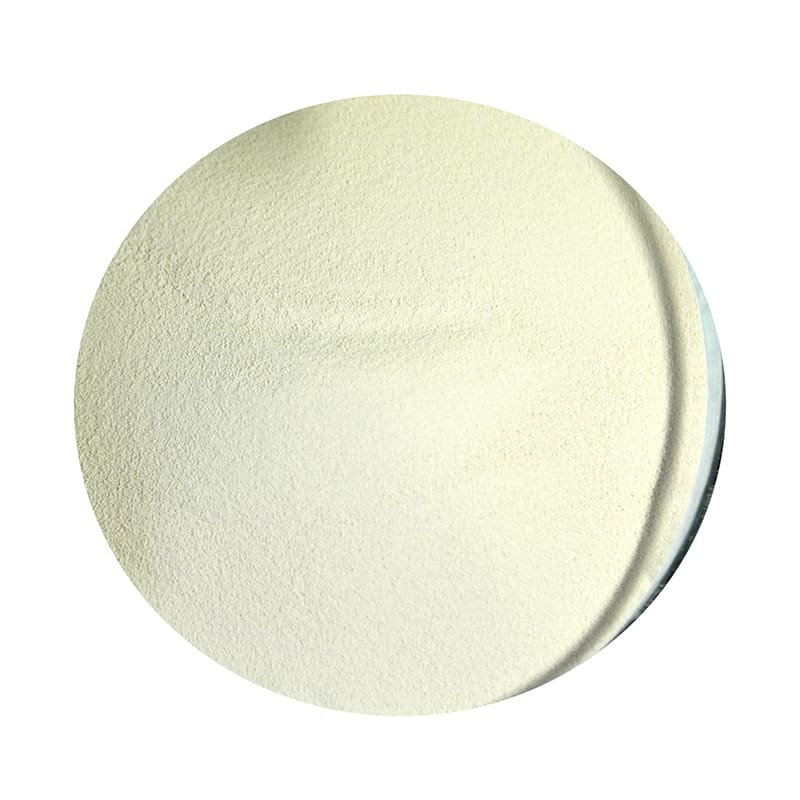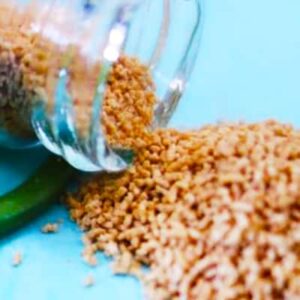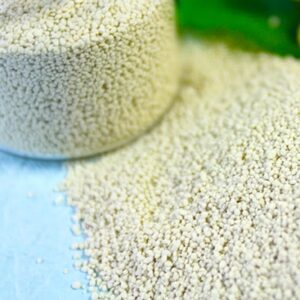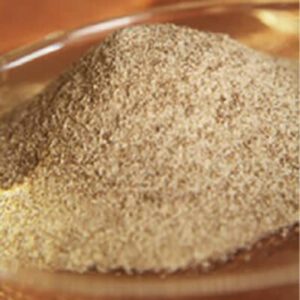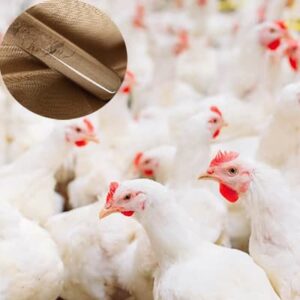Product Video
Product Introduction
Product Description
Thermostable Acid Beta-Mannanase can specifically hydrolyze mannan to mannose-oligosaccharide in feed, thus reducing intestinal chyme viscosity and improving feed energy efficiency. Acid Beta-Mannanase is an endomannanase that mainly hydrolyzes galactomannan, glucomannan, galactomannan, and mannan, the main chain of which are all 1,4-β-D-pyran mannose, to oligosaccharide which containing 2~10 residues.
Feed enzymes are produced by microbial fermentation and are added to feed to improve digestion and utilization of feed or improve metabolic efficiency in animals. Enzymes that can be added to feed include Protease Mix, Thermostable Phytase, Highly Efficient Phytase, NSP Enzyme, Lipase, Pectinase, Cellulase, α-Amylase, Alpha- Galactosidase, Beta-Glucanase, Glucose Oxidase, Thermostable Acid Protease, Acid Protease, Thermostable Acid Beta-Mannanase, Beta-Mannanase, Xylanase, etc.
About 70% or more of poultry sticky wheat rations worldwide have enzymes added to them, and nearly 90% of poultry feeds in Europe contain enzymes.
Enzyme preparations are divided into three main categories:
Non-starch polysaccharidases
Non-starch polysaccharide enzymes include xylanase, β-glucanase, β-mannanase, cellulase, α-galactosidase, pectinase, etc., which act on the corresponding NSP in the feed. livestock and poultry do not secrete this type of enzyme and must be added exogenously from the feed, which is the main enzyme preparation for feeding.
Phytase
Phytase has a special spatial structure that sequentially separates phosphorus from phytic acid molecules and degrades phytic acid (salt) into inositol and inorganic phosphorus while releasing other nutrients bound to phytic acid (salt).
Endogenous digestive enzymes
Endogenous digestive enzymes are enzymes that can be secreted by the animal’s digestive tract itself, mainly proteases, amylases, and lipases. In some special cases, endogenous enzymes also need to be supplemented by the feed.
Product features
1. Good tolerance to pepsin, trypsin, and high concentration of metal ions, to ensure good use of the product.
2. The retention rate is 98% in the 90s in a 75℃ water bath. The retention rate was 96% at 75℃ for 3min and 85% at 80℃ for 5min. PH3.0 water bath for 30min, the retention rate was 94%.
Product Parameter
This product can be added directly to the compound enzyme as raw material and has synergy with β-glucanase and α-galactosidase.
Recommended Dosage: 500-1000U/kg of complete feed with soybean meal; 1000-2 000 U/kg of complete feed with a miscellaneous meal.
Species: Poultry or livestock.
Activity: 10 000 U/g, 50 000 U/g.
CAS number: 37288-54-3.
Loss on Drying: Not more than 10%.
Appearance: Free-flowing light yellow powder.
Package: 25kg/bag.
HS Code: 2309901000
Key Point:
Keep away from the moisture and avoid storing in a high-temperature environment. Seal both internal and external packages after use. under proper conditions in a dry well ventilated and cool place. Use it as soon as possible, If any remain, seal tight after use.
FAQ
A: No, according to customer needs.
A: The professional QC team will control the quality of the goods during all mass production, or if you wish, you can arrange a third-party inspection service. We will provide bulk samples for evaluation before shipment.
A: The sample is free, but the freight is payable. Please contact us in advance if you need samples. You can prepay shipping charges via PayPal or Western Union, and we will send samples as soon as we receive your shipping charges. Or you can provide your courier (DHL, TNT, etc.) account to us for pickup.
A: We can provide customers with full supervision of the procurement process and deliver the most satisfactory goods to them.
Accept delivery terms: FOB, CFR, CIF, EXW, CIP, DDP, express; Accept payment currencies: US dollars, Euros.
A: Yes, we do. We are a professional company in livestock farm products. We have a professional and strict quality control, we must provide you the best service for your need. Our product service department will keep in touch with customers and reply at any time.
Yes, we accept ordering samples to check quality. And mixing samples is acceptable.
A: For preparing samples, depending on the number of samples and process requirements, our preparation time is 1-7 days. International express delivery time is 3-7 days.
Related products
-
Animal Feed Additive Products
Feed Additive Lysine
-
Animal Feed Additive Products
Dicalcium Phosphate DCP Feed Additive
-
Feed Enzyme
Feed Additive Protease Mix
-
Feed Enzyme
Feed Additive Thermostable Phytase
-
Feed Enzyme
Feed Additive Feed Enzyme Lipase
-
Feed Enzyme
Feed Additive Feed Enzyme Cellulase
-
Feed Enzyme
Feed Additive Feed Enzyme α-Amylase
-
Feed Enzyme
Feed Additive Beta-Mannanase

